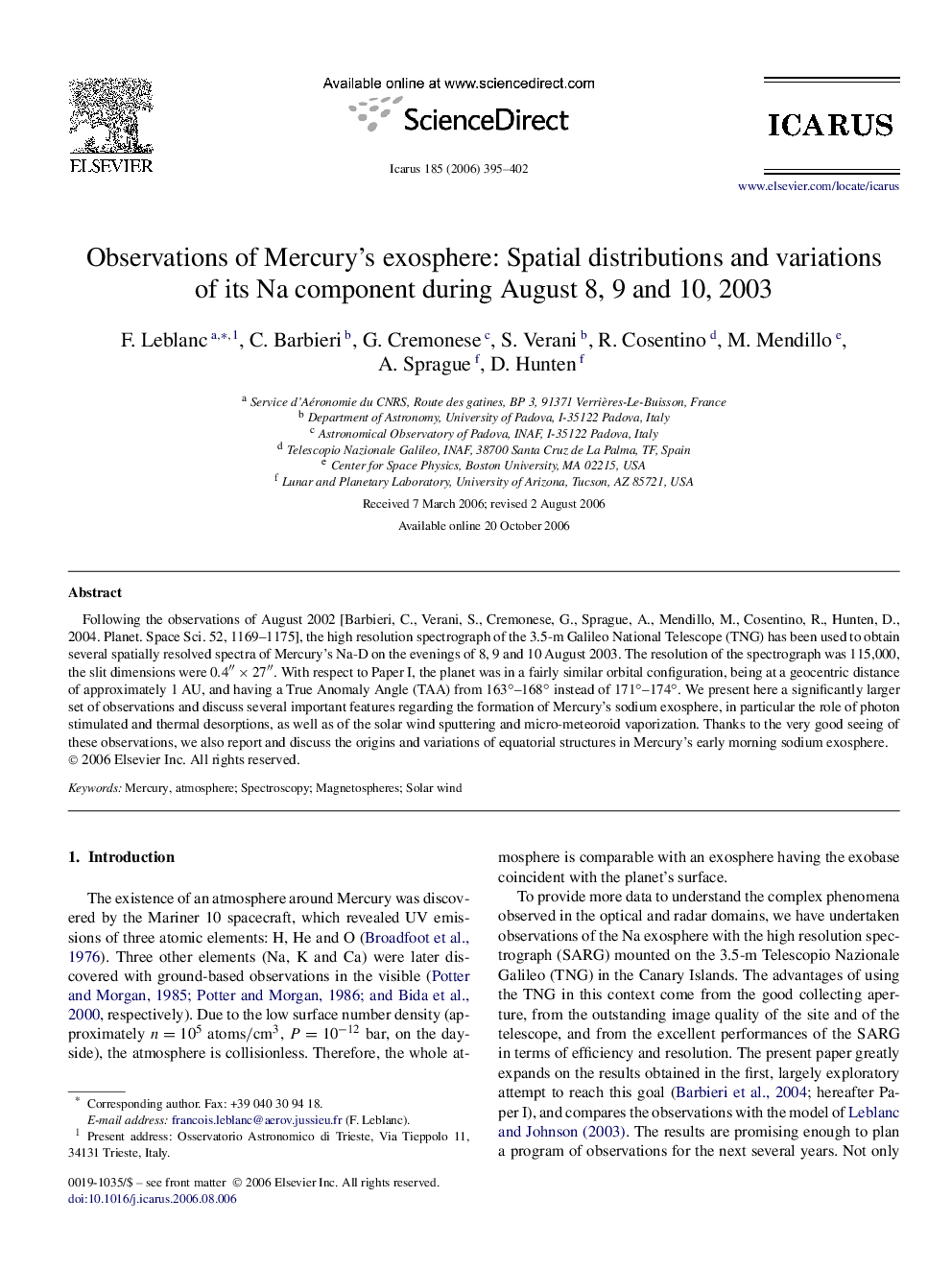| Article ID | Journal | Published Year | Pages | File Type |
|---|---|---|---|---|
| 1775502 | Icarus | 2006 | 8 Pages |
Following the observations of August 2002 [Barbieri, C., Verani, S., Cremonese, G., Sprague, A., Mendillo, M., Cosentino, R., Hunten, D., 2004. Planet. Space Sci. 52, 1169–1175], the high resolution spectrograph of the 3.5-m Galileo National Telescope (TNG) has been used to obtain several spatially resolved spectra of Mercury's Na-D on the evenings of 8, 9 and 10 August 2003. The resolution of the spectrograph was 115,000, the slit dimensions were 0.4″×27″0.4″×27″. With respect to Paper I, the planet was in a fairly similar orbital configuration, being at a geocentric distance of approximately 1 AU, and having a True Anomaly Angle (TAA) from 163°–168° instead of 171°–174°. We present here a significantly larger set of observations and discuss several important features regarding the formation of Mercury's sodium exosphere, in particular the role of photon stimulated and thermal desorptions, as well as of the solar wind sputtering and micro-meteoroid vaporization. Thanks to the very good seeing of these observations, we also report and discuss the origins and variations of equatorial structures in Mercury's early morning sodium exosphere.
